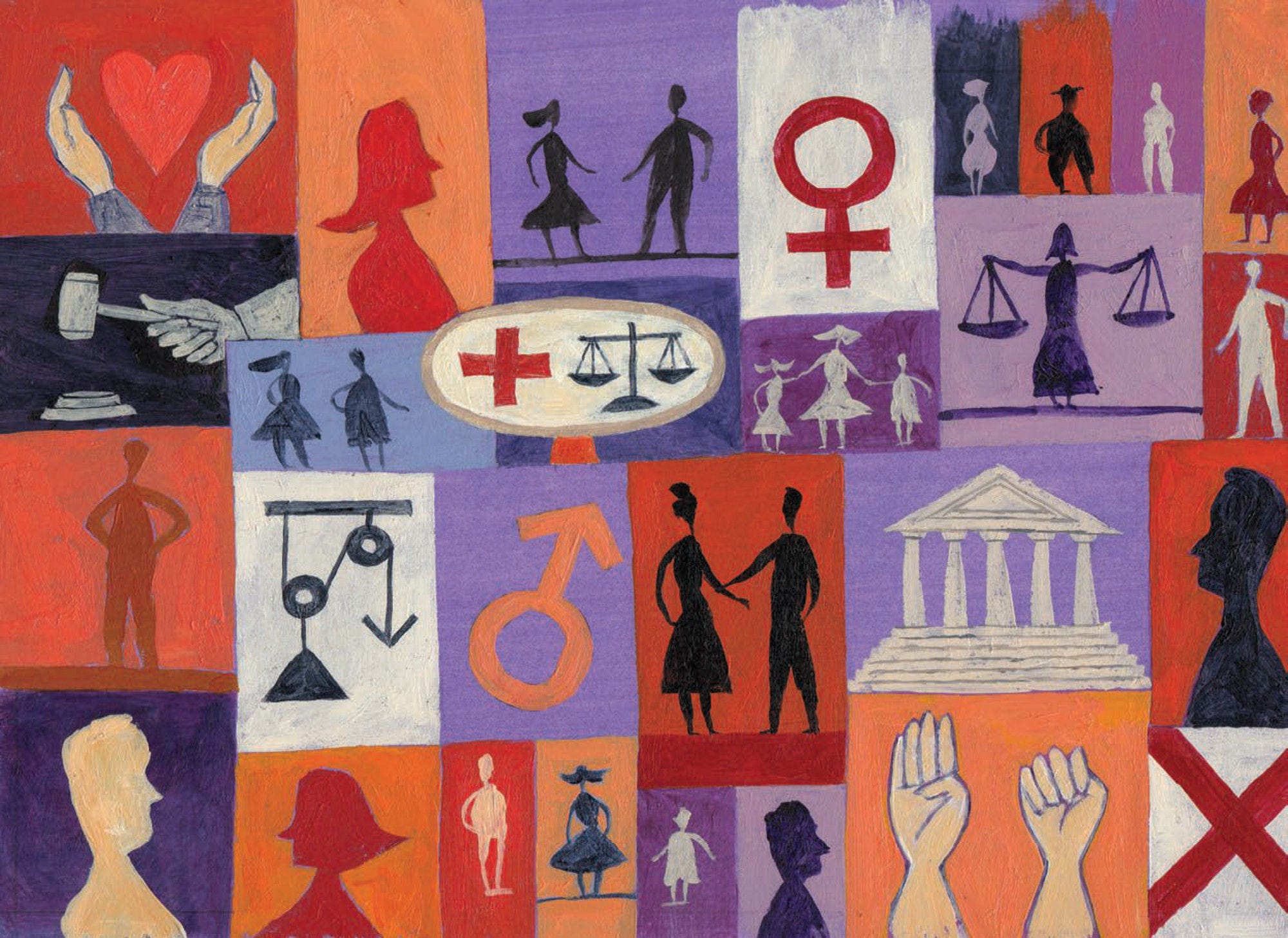Gender-based violence affects many aspects of survivors' and victims' lives, including access to education, employment, housing, health care, legal support, and physical and mental health services. While many governments have enacted policies and programmes to eradicate gender-based violence and address its intersectional impacts, strategic planning, policy co-ordination, and long-term investment in services has often been uneven. This publication explores how countries can strengthen public governance systems, respond to the needs and experiences of survivors/victims, and improve access to justice and accountability to effectively address gender-based violence.
Eliminating Gender-based Violence

Abstract
Executive Summary
Worldwide, nearly one-third of women have experienced intimate partner violence or non-partner sexual violence, or both in their lifetime. Beyond this statistic, women and girls also face other forms of GBV, including intimate-partner economic and psychological abuse, technology-facilitated violence, sexual harassment, human trafficking, female genital mutilation, and forced marriage.
GBV is a complex phenomenon that exists in many different forms and may be experienced within family and intimate relationships, in public spaces and workplaces, and online. Acts of GBV are usually part of a pattern that can affect all aspects of survivors/victims' lives. This includes their access to education, employment, housing, health care and justice, as well as their physical and mental well-being and health. When survivors/victims have children, such impacts may also extend to them. Moreover, GBV has economic ramifications for survivors/victims, their families and societies as a whole. Studies focused primarily on intimate partner violence, for example, estimate such violence typically costs countries between 1-2% of their annual gross domestic product.
The COVID-19 pandemic exacerbated GBV worldwide. From France, Italy and the United Kingdom, to Colombia, Mexico and the United States, reports of domestic violence cases and/or calls to domestic violence helplines increased during the pandemic. The UN Population Fund also predicted there would be an additional 15 million cases of intimate partner violence in 2020 for an average lockdown duration of three months. This prediction was reflected in a systematic review of Argentina, Australia, India, Italy, Mexico, Sweden, and the United States estimates that, on average, officially reported incidents of domestic violence increased by 7.9% in those countries during 2020.
Eradicating all forms of GBV is a global responsibility. While many governments have enacted policies and programmes to this end, strategic planning, policy co-ordination, and long-term investment in services for GBV have often been uneven, limiting the effectiveness of governmental measures. Governments’ insufficient commitments and capacities to implement strategies to eliminate GBV have been further exposed by the COVID-19 pandemic. Analysis by the European Institute for Gender Equality (EIGE), for example, found that none of the European Union (EU) member States had national polices or action plans in place that accounted for intimate partner violence in crisis situations, prior to the crisis. The study also found that, as of September 2020, only three EU Member States had adopted plans to address intimate partner violence in the context of the COVID-19 pandemic.
Such difficulties have also been identified in OECD surveys, where countries have highlighted action against GBV as their highest gender policy priority, both before and during the COVID-19 pandemic. For example, in a 2016 survey of countries adhering to the OECD Gender Recommendations (2013 OECD Recommendation on Gender Equality in Education, Employment and Entrepreneurship and the 2015 OECD Recommendation on Gender Equality in Public Life), 21 of the 37 governments surveyed listed GBV as one of the three most urgent gender equality issues in their respective countries. Similarly, in a 2020 survey of national institutions with a mandate to advance gender equality and women’s empowerment, 92% of respondents identified “support for gender-based violence survivors/victims” as one of the three critical issues that such institutions were trying to manage in response to COVID-19.
This report presents a three-pillar approach to creating an effective, whole-of-state framework for addressing GBV.
Under Pillar 1 (Systems), the focus is on creating a whole-of-state system to prevent and respond to GBV. It emphasises the importance of developing holistic laws, policies and strategies; clearly identifying the roles and responsibilities of state actors and relevant stakeholders; and establishing internal and external accountability mechanisms.
Under Pillar 2 (Culture), the focus is on creating a governance and service culture that is survivor/victim-centred. This pillar, in particular, underscores the importance of building the capacity of service providers; committing to GBV detection and prevention; funding essential services and programming; and engaging men and boys in challenging harmful gender attitudes and behaviours.
Finally, Pillar 3 (Access to Justice and Accountability) covers the issues of access to justice for survivors/victims of all backgrounds and bringing to justice those who perpetrate GBV. Key elements highlighted here include designing justice-related services and proceedings that are responsive to the needs and experiences of survivors/victims; sanctioning and rehabilitating perpetrators; and tracking femicides/feminicides in order to address preventable failings and inadequate responses by the justice system.
In addition, this report identifies some critical and emerging issues where more analysis and consideration are needed. Among them are the increase in technology-facilitated violence, which takes many forms and often affects women and girls disproportionately; the potential of behavioural insights and public procurement to improve the effectiveness of GBV programmes and services; and the issue of intersectional research gaps in the field of GBV.
Key actions for eliminating GBV
Developing a whole-of-state framework with a clear vision to address GBV
Establishing a holistic approach to GBV by outlining differentiated actions and objectives within the framework
Identifying and clearly defining roles for key governmental actors
Creating clear accountability, monitoring, and reporting mechanisms
Engaging with key societal and non-governmental actors and stakeholders
Designing and implementing GBV responses with a survivor/victim-centred approach
Fostering a culture of information-sharing and cross-sector collaboration to address GBV
Committing to detecting and preventing GBV
Ensuring appropriate capacity-building for actors involved in the GBV framework
Engaging with men and boys on issues of GBV
Explicitly recognising the legal and social needs of survivors/victims
Employing clear strategies to facilitate access to justice for survivors/victims of GBV
Holding perpetrators of GBV to account through multiple justice responses
Documenting and studying patterns surrounding femicides/feminicides
Related publications
-
 26 June 2024
26 June 2024





